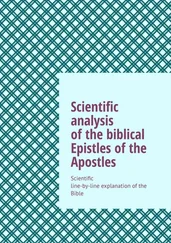Figure 10.Eskimo Nebula
Ten thousand years ago this halo of gas and dust was part of the central star. The aging star then expelled its outer layers into space in successive bursts, forming what astronomers call a planetary nebula. All ordinary stars like the Sun will eventually meet a similar fate.
Figure 11.Veil Nebula
These glowing filaments trace a portion of the expanding remnants of a supernova, a star that exploded about five thousand years ago in the constellation Cygnus.
Figure 12.Sagittarius Star Cloud
A relatively crowded region of old stars in the direction of the center of the Milky Way Galaxy.
Figure 13.Andromeda Galaxy, M31
This large spiral galaxy is only about 2 million light-years away, making it the closest one to our own Milky Way. The flattened rotating disk of stars and clouds of gas and dust is about 200,000 light-years across and contains several hundred billion solar systems.
Figure 14.Hercules Cluster
Most of the objects in this image are entire galaxies, like our own Milky Way, each containing many billions of stars. Many of the galaxies of the Hercules Cluster are interacting, with some of them actually colliding and merging. This rich cluster is about 650 million light-years away.
Figure 15.Saturn Wide Shot
A stunning array of orbiting rings encircles the gas giant planet Saturn, which casts its shadow on them. The Cassini Division is the most prominent of many gaps in the ring system. It is named after the seventeenth-century Italian-French astronomer Giovanni Domenico Cassini who made many important discoveries about our solar system. His namesake spacecraft, the one that took this picture, has now done the same.
Figure 16.Close-up of Saturn's Rings
In this back-lit image from the Cassini spacecraft, the Sun illuminates Saturn's rings from behind, revealing the fine structure of multiple thin rings.
Figure 17.Solar Nebula
A chaotic cloud of interstellar gas and dust collapses under its own gravity (A). Most of the mass falls to the center to form and ignite the Sun, but the residual spin of the cloud prevents it from collapsing in one direction, resulting in a flat rotating disk (B). The particles in the disk coagulate to form larger objects, and the largest ones sweep out clear lanes from the debris disk (C). This process continues as the colliding particles become larger and fewer (D), eventually leaving the solar system in its present form (E).
Figure 18.Planetesimals
In this stage of formation of a planetary system, colliding asteroid-size bodies orbit around the central star.
Figure 19.BETA PlCTORIS
This 1997 false-color image shows a debris disk seen edge on in orbit around the star Beta Pictoris, which some twenty years earlier had provided the first evidence of planetary formation around a star outside our solar system. The telescope has blocked out the direct light from the star to reveal the fainter light reflected from the disk. The inner gap in the disk suggests that planets are forming there. Most young stars have such orbiting disks.
Figure 20.Comet Machholz
The extended atmosphere, or coma, of the comet blows away from the Sun to form faint tails of dust and ionized gas.
Figure 21.Olive Oil and Comets
English astronomer William Huggins compared the spectra of vaporized olive oil and ethylene (olefiant gas) with the spectra of two comets, which he observed in 1868. He correctly deduced that comets contain carbon-bearing substances.
Figure 22.Comet NEAT Spectrum
The light of Comet NEAT (shown on the jacket of this book) is spread out into its constituent rainbow of colors (bottom), revealing the presence of different molecules at particular wavelengths (middle).
Figure 23.End of the World
An illustration by R. Jerome Hill, published in Harper's Weekly, May 14, 1910, depicting the romantic fatalism inspired by the coming of the "cyanide laden" Halley's Comet.
Figure 24.Iapetus
The surface of this mysterious satellite of Saturn has two distinct zones, one icy and very bright, the other covered by a very dark red material of unknown composition. This bimodal distribution of brightness is unique in the solar system, as is the ridge around the satellite's equator.
Figure 25.Saturn Small Moons
The satellites shown here range in size from about 20 to 200 kilometers. They lack sufficient gravity to enforce a spherical shape.
Figure 26.Uranus Rings
This infrared image, taken at a wavelength of 2.2 microns, reveals several distinct rings encircling the planet. The isolated bright spot is the moon called Miranda.
Figure 27.Phobos
This curiously potatolike cratered inner moon of Mars has an average diameter of 22 kilometers and an orbit period of about eight hours.
Figure 28.Deimos
The outer moon of Mars has an average diameter of 13 kilometers and an orbit period of thirty hours.
Figure 29.Mars Surface by Firing 1
The view from the Viking 1 Lander on the surface of Mars, in 1977, shows a rocky landscape and a ruddy sky. The lander in the foreground has its meteorology arm extended.
Figure 30.TlTAN DISK
The largest moon of Saturn, with its intriguing features photographed by the Cassini orbiting space probe in 2005.
Figure 31.TlTAN COAST
Showing icy highlands with dry rivers and what appears to be the shoreline of a vanished sea, as seen by the Huygens descent probe from an altitude of about 10 kilometers in 2005.
Figure 32.Sagittarius Stars
The Spitzer Space Telescope turned its gaze toward the constellation Sagittarius. Its infrared camera was able to penetrate the obscuring curtains of gas and dust for a thrilling look at the crowded center of the Milky Way Galaxy.
Figure 33.SETI SPECTRUM
A graph of the natural radio background noise over a wide range of frequencies. At lower frequencies (left), charged particles in our galaxy emit increasing noise. At higher frequencies (right), the intrinsic quantum noise of any radio receiver increases. Between them is a relatively quiet "window," where interstellar hydrogen (H) and hy-droxyl (OH) emit radio energy at discrete frequencies. This plot does not include radio emission from molecules in the Earth's atmosphere.
Figure 34.Simulated SETI Signal
The search for extraterrestrial intelligence includes the monitoring of stars at many radio frequencies simultaneously over time. A successful detection might resemble this signal, which actually came from the Pioneer 10 spacecraft in the outer solar system. The drift in frequency over time shows that the source is not rotating with the Earth, but is of extraterrestrial origin.
Figure 35.The Cretaceous-Tertiary Record in the Rocks at Gubbio
The evidence for the event that caused the extinction of the dinosaurs sixty-five million years ago was discovered in this sequence of sedimentary strata from Gubbio, northern Italy. The pale limestone layers at the lower right were deposited in the Cretaceous period, when dinosaurs ruled the Earth. The darker limestone layers at the upper left are from the subsequent Tertiary period, when they had become extinct. In between, the diagonal layer of black clay contains the worldwide iridium-rich fallout of debris from the crater excavated by the collision of an asteroid or comet. This layer is found everywhere on Earth where rocks of this age are exposed. The edge of a coin at the top is for scale.
Читать дальше










